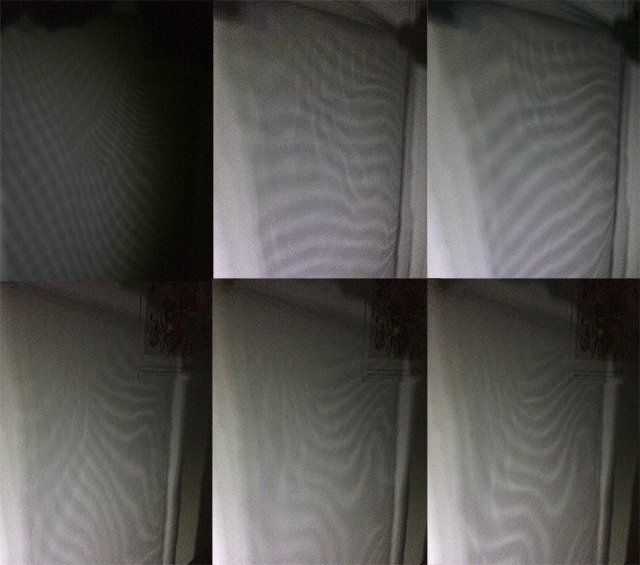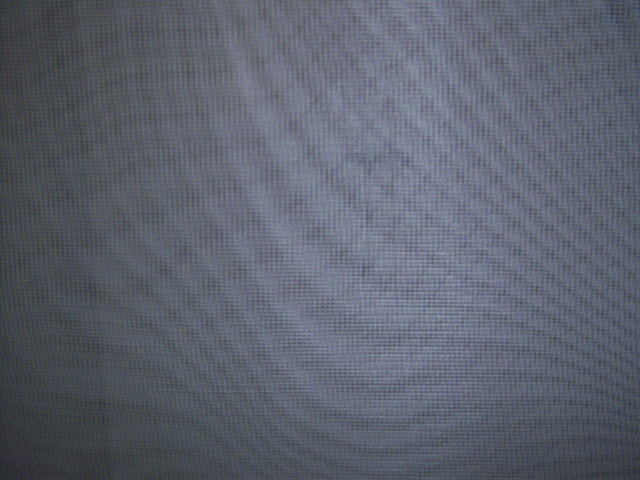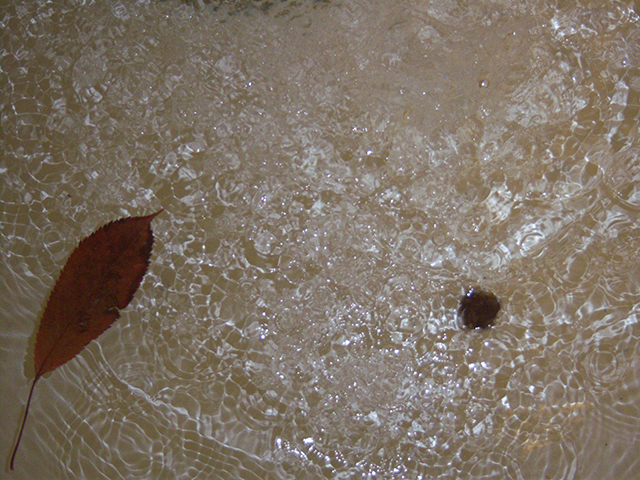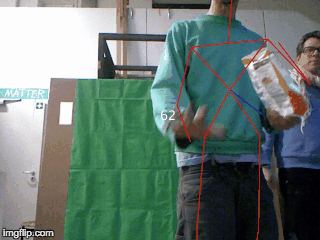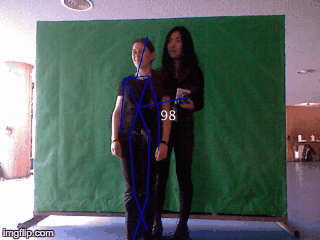EmilioAguas (talk | contribs) |
EmilioAguas (talk | contribs) |
||
| Line 165: | Line 165: | ||
[[File:Testing_Installation.gif|left]] | [[File:Testing_Installation.gif|left]] | ||
[[File:Testing_01.gif|center]] | |||
<br style="clear:both;"> | |||
Testing the performance of the motion tracking and computer vision of the installation at Haus der Kulturen der Welt | |||
<br style="clear:both;"> | <br style="clear:both;"> | ||
---- | ---- | ||
===Footage collected from the installation=== | ===Footage collected from the installation=== | ||
Revision as of 16:50, 18 April 2016
Cultural patterns VS Natural patterns
I started with the Idea of recreate nature patterns with human performers but after a few experiments and research about social behaviour in public spaces, I decided to take a different approach to this idea, instead I discover that was far more interesting interact with people in a regular way but taking in consideration, that me as a foreigner with different cultural patterns could trigger certain reaction to the people because I behave a bit different body gestures and that could make them feel uncomfortable or give them a weird sensation.
Experiments
Bodies reacting to a physical interference
Interference patterns with light and shadows
"The phenomenon of "Moiré patterns" is an early instance of emergent form: the superposition of two simple patterns gives rise to a new, more complex pattern which is unrelated to each of its constituents: it is an interference pattern, generated by the interaction between the constituents.
A diffraction grating is a transparency with ruled parallel lines so close they cannot be seen with the naked eye. But if two such gratings are superimposed, with slightly different rulings, a pattern analogous to the beats of sound becomes entirely visible, in fact a good alternative name for moiré patterns would be 'visible beats'. One is provoked to conjecture that the fundamental nature of matter is based on such a principle. Perhaps all we can observe in nature are moiré fringes produced by something analogous to diffraction gratings in which the distances between adjacent lines are so small that there is no method known for their direct observation, even with an electron microscope. This suggestion would fit in well with the theory of 'winding space', where space is assumed not to close in on itself but to just miss, that is, instead of being a hypersphere it is a sort of hyper-helix."
taken from: http://radicalart.info/AlgorithmicArt/moire/index.html
Idea
Every human been affects their own environment and also the space we share with the flora and fauna and even with other people, so how a "simple movements" like walking, running or jumping in the same space, starts to affect the personal space.
With the overlapping of the data of the people moving in a small space I propose to create a visual projection, that show these movements through the possibilities of generative art concept.
"Personal space is the region surrounding people that they regard as psychologically theirs. Most people value their personal space and feel discomfort, anger, or anxiety when that space is encroached. Permitting a person to enter personal space and entering somebody else's personal space are indicators of how the two people view their relationship. There is an intimate zone that is reserved for lovers, children, and close family members. There is another intermediary zone that is used for conversations with friends, to chat with associates, and in group discussions. There is a further zone that is used by strangers and acquaintances, and finally, a zone that is used for public speeches, lectures, and performances.
The size of one's sense of personal space is culturally determined, in addition to being dependent upon the nuanced relationship of the two interlocutors. Averaged estimates place one's sense of personal space at two feet on either side, 28 inches in front, and 16 inches behind for an average Westerner. Those living in densely populated places tend to have a smaller sense of personal space. Moreover, individual sense of space has changed historically as the notions of boundaries between public and private spaces have evolved over time.
Senses of personal space are intimately tied to the relationship between the two individuals involved. Entering someone's personal space is normally seen as an indication of familiarity. However, in modern society, particularly in crowded urban communities, it is sometimes difficult to maintain personal space; for example, in a crowded train. Many people find such physical proximity to be psychologically uncomfortable, but it is accepted as a fact of modern life. Sociologists study personal space precisely because of social implications of distance in regard to relationships."
Source: Boundless. “Personal Space.” Boundless Sociology. Boundless, 21 Jul. 2015. Retrieved 17 Nov. 2015 from https://www.boundless.com/sociology/textbooks/boundless-sociology-textbook/social-interaction-5/types-of-social-interaction-51/personal-space-323-8973/
First Approach
A short exercise was created with the intention to see how the people behave in small spaces and when they need to regain or maintain their personal space.
Proxemics Approach
Every time we are in a place surrounded with to many people we feel restrained even more if it's a small place, but also is a good setting to meet people.
When we meet some one new we try to be very formal and not show to much of us, but at the same time our bodies are telling so many things about ourselves to others, like postures and facial expressions.
With the Motion tracking and facial recognition device i will try to attempt to see and understand patterns in our facial and body expressions; it doesn't matter where you are, where you come from, we feel comfortable with people that we already know, and a little awkward the first time we meet or greet someone.
Some cultural behaviors are more well prepared to deal with this kind of situations.
An anthropological experiment and analysis could been seen here:
The Social Life of Small Urban Spaces by William H. Whyte [1]
¡That experiment gave me the final idea to create my installation!
Proxemics saving our personal space, a Cultural shock
Boundaries
Been a foreigner trying to adapt to a change, understand different culture patterns creates invisible barriers.
First questions & reapproach of my idea
Digital barriers in XXI century communications era. Which are our first impressions to meet someone of a different culture?, perhaps awkwardness, how do we behave? there are behavioral patterns in the people of the same culture?.
How we meet people?, how do we greet in different cultures? In which situations we feel more, or less comfortable with ourselves or with other people that surround us, is the space between us something that matters?.
According to psychological and anthropological investigations in the field of human behavior and proxemics certain things counts when you relate to people, for example a handshake, a hug or a kiss on the chick; these simple things tells so much about us and where do we come from and who we are in a certain way; keeping this in mind I developed an interactive installation combined with a performance to try to meet and greet people but at the same time make them feel uncomfortable.
The performance explores the concept of personal space and how do we break or adapt into different situations according to our cultural background.
I want to provide a test field to make people a little bit uncortable and also break those barriers, sharing something about my cultural background. When someone feels threatened or not very comfortable try to avoid contact, it's easier in really small places as elevators or corridors to see this type of behavior.
If I succeed in breaking this barriers with some of the transmediale participants it' would be nice to record their facial expressions when they do it to compare it with previous facial expressions recorded of people from another cultural background .
It's a sociological and anthropological experiment push it through the capacity of technical reactive space.
Setup & Performance
For the setup of the installation i will need ca. 45 minutes to one hour, because i will need to calibrate the cameras, the projector, the kinect, the speakers and put the furniture in place with the projection wall and also to do all the plug in for the VGA wire around the space.
The performance will be held in a narrow space but not close, just with certain space limitations, delimited by duct tape on the floor or by one scaffolding for the video projection and a green screen beneath the viewer.
When the people enter into this space a web camera it's going to detect or recognize the people's face, with this input a video will be triggered, the video content is about how the people meet and greet in different cultures also combined with basic facial expressions, during this moment I will approach to the viewer and try to meet and greet him or her and try to invade their personal space.
If I succeed in getting really close to them (around 20 cm ) a kinect device it's going to recognize the distance between us and take a picture that provides our body positions, and data distance between our bodies centers.
Everything described above will be recorded for documentation purposes.
For every person it will take around to 30 second to 1 minute to see the response if I am lucky enough to manage a lot of people this will take approximately 45 minutes to get a lot of data and facial a body expressions from the different viewers and actors of this interactive- performative installation happening.
Technical details
-Installation-
- Projector beamer about 2000-3000 lumens
- 2 Laptops with vlc or quicktime for video play (I will provide one of them)
- Kinect V1 or Kinect V2 with all the cables and plug ins adapters for mac laptop
- VGA cable ca. 8 mt. long
- VGA mac adapter (I will provide)
- wireless web camera
- A set of speakers (standard stereo) (mini Jack cable)
-Documentation- (This will be provided)
- DSLR Camera
- SD card
- Camera Lenses
- Tripod
-Space Installation-
- A low light room or closed space with (7X2X2) mt. long, deep and high
- Little sofa for 2 people
- 2 High shelf (over the sofa for projection against the wall) (next to the sofa for recording and people detection system)
- Industrial duct tape
- At least 3 electric outlets
- electric extension board (I will provide)
-Performance-
- Me
- People in the delimited space
- BOUNDARIES - Transmediale 2016 Interactive Installation
With the help of a person, who was running and taking care of the setup I was able to work freely as a performer interacting with the people at the space.
-Some people was very interested in to understand what was the videos about they were watching.
-Some of them thought that they were talking with someone who was at another place during the transmediale, sort of a telepresence performance.
-Other thought that this was just a simple video until they realized that the people on the screen talk to them if they paid attention or watch the screen, because for some spectators they saw me playing in front of the screen or some other actors.
This is the sample video which was watched by the transmediale assistants
<videoflash type="vimeo">163279588|1024|480|</videoflash>
Testing the installation
Testing the performance of the motion tracking and computer vision of the installation at Haus der Kulturen der Welt
